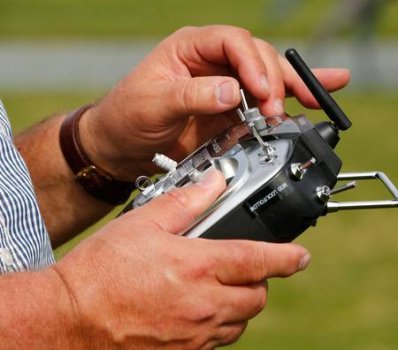In the past 10 months, the Fort Wayne (Indiana) Police Department has written 22 city ordinance violations for drones flying in the City of Fort Wayne’s downtown aerial district. While your own department has likely also seen incidents rise, what you may not know is that four federal agencies currently hold all legal authority to mitigate dangerous drones.
The law currently states that only those working for the DHS, DOD, DOE and the DOJ are legally allowed to mitigate and intercept a threatening drone. And while there can be cases argued for protocol, these laws can and should be updated to include granting authority to state and local law enforcement to help take down drones in order to effectively protect the communities in which we serve.
ANATOMY OF A DRONE THREAT
New technologies are designed to safely detect and mitigate dangerous drones. As our agency learned through counter-drone training through New Mexico Tech, we manage a drone by first detecting it, then identifying it, tracking it, assessing if hostile, responding and reporting as needed. But in this case, "respond" doesn’t necessarily mean "mitigate."
The "respond" step usually entails tracking down the operator and asking them to remove the drone or face fines, or capturing the drone itself for evidence. At this point, it’s not legal for law enforcement to take down a drone. The best tool we currently have is a written citation, which won’t stop someone if they truly want to cause harm.
Continue reading: https://www.police1.com/police-products/police-drones/articles/why-state-and-local-law-enforcement-needs-legal-authority-from-congress-to-counteract-dangerous-drones-Cer6e9HCGbfZvDRr/
The law currently states that only those working for the DHS, DOD, DOE and the DOJ are legally allowed to mitigate and intercept a threatening drone. And while there can be cases argued for protocol, these laws can and should be updated to include granting authority to state and local law enforcement to help take down drones in order to effectively protect the communities in which we serve.
ANATOMY OF A DRONE THREAT
New technologies are designed to safely detect and mitigate dangerous drones. As our agency learned through counter-drone training through New Mexico Tech, we manage a drone by first detecting it, then identifying it, tracking it, assessing if hostile, responding and reporting as needed. But in this case, "respond" doesn’t necessarily mean "mitigate."
The "respond" step usually entails tracking down the operator and asking them to remove the drone or face fines, or capturing the drone itself for evidence. At this point, it’s not legal for law enforcement to take down a drone. The best tool we currently have is a written citation, which won’t stop someone if they truly want to cause harm.
Continue reading: https://www.police1.com/police-products/police-drones/articles/why-state-and-local-law-enforcement-needs-legal-authority-from-congress-to-counteract-dangerous-drones-Cer6e9HCGbfZvDRr/

